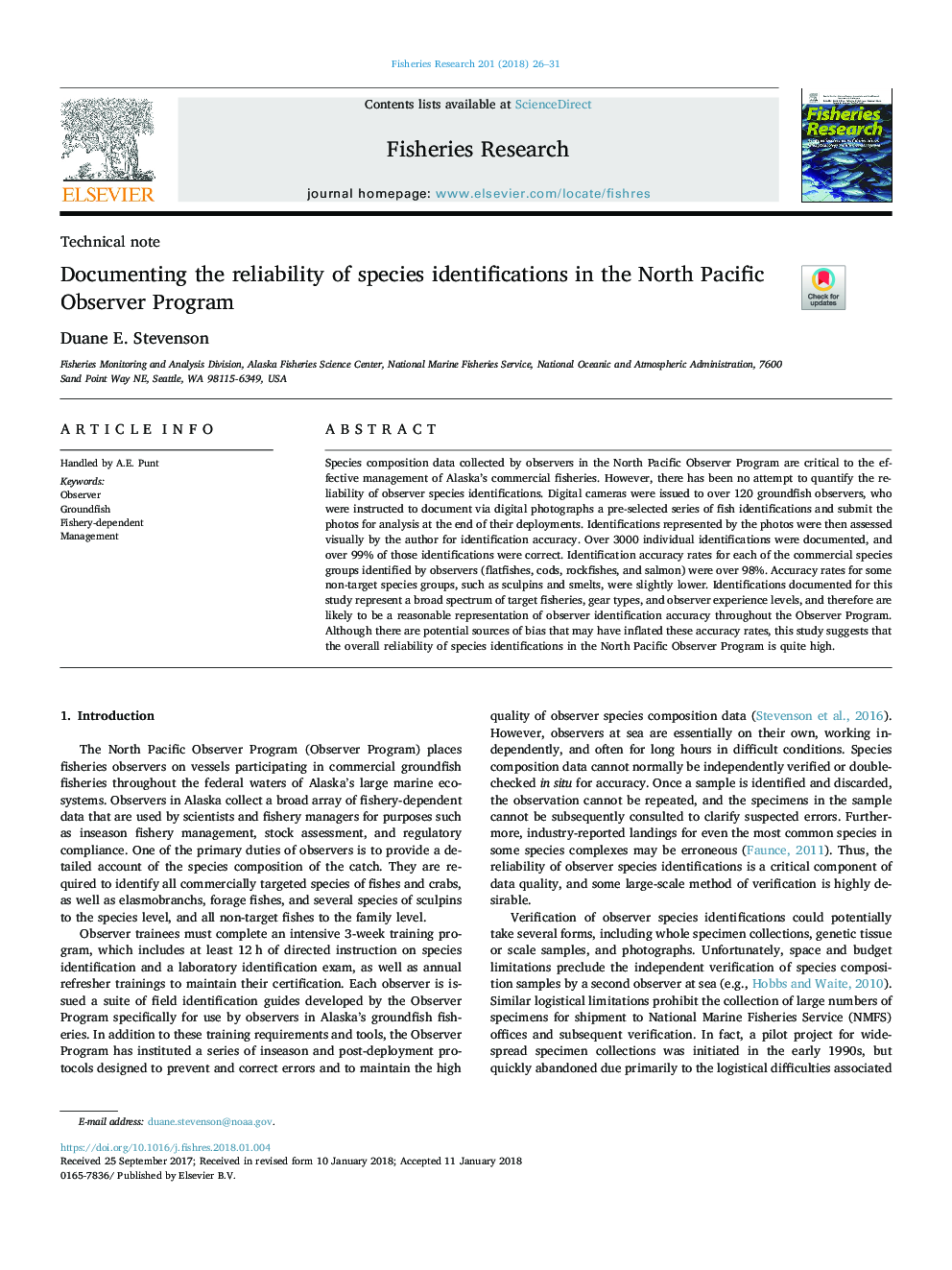| Article ID | Journal | Published Year | Pages | File Type |
|---|---|---|---|---|
| 8885494 | Fisheries Research | 2018 | 6 Pages |
Abstract
Species composition data collected by observers in the North Pacific Observer Program are critical to the effective management of Alaska's commercial fisheries. However, there has been no attempt to quantify the reliability of observer species identifications. Digital cameras were issued to over 120 groundfish observers, who were instructed to document via digital photographs a pre-selected series of fish identifications and submit the photos for analysis at the end of their deployments. Identifications represented by the photos were then assessed visually by the author for identification accuracy. Over 3000 individual identifications were documented, and over 99% of those identifications were correct. Identification accuracy rates for each of the commercial species groups identified by observers (flatfishes, cods, rockfishes, and salmon) were over 98%. Accuracy rates for some non-target species groups, such as sculpins and smelts, were slightly lower. Identifications documented for this study represent a broad spectrum of target fisheries, gear types, and observer experience levels, and therefore are likely to be a reasonable representation of observer identification accuracy throughout the Observer Program. Although there are potential sources of bias that may have inflated these accuracy rates, this study suggests that the overall reliability of species identifications in the North Pacific Observer Program is quite high.
Keywords
Related Topics
Life Sciences
Agricultural and Biological Sciences
Aquatic Science
Authors
Duane E. Stevenson,
